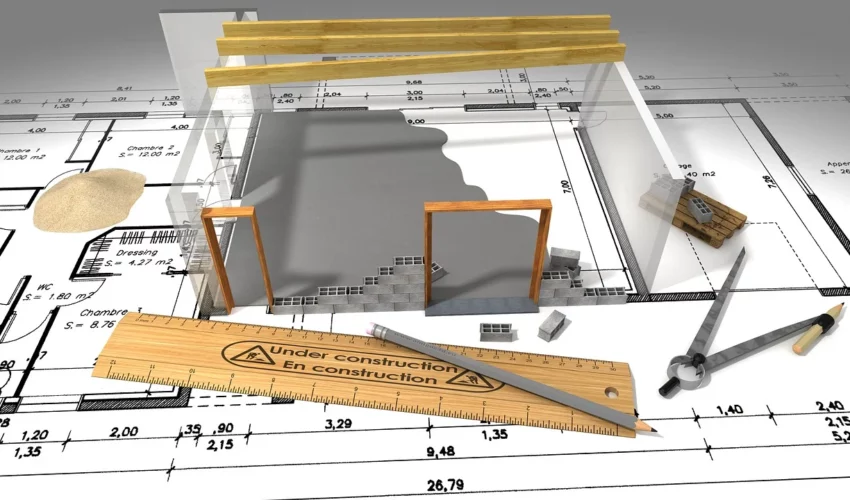The construction industry is continually evolving, with new technologies and methodologies transforming the way projects are planned, executed, and managed. One such innovation is Building Information Modelling (BIM). This digital approach to construction has rapidly become a cornerstone of modern project delivery, improving collaboration, efficiency, and accuracy.
At Blackstone Solicitors, we have seen how BIM is reshaping construction projects across England and Wales. We also understand the legal implications that come with adopting this advanced technology. This article explains what BIM is, its benefits, and how construction companies can navigate its implementation effectively while addressing potential legal considerations.
Free Initial Telephone Discussion
For a free initial discussion with a member of our New Enquiries Team, get in touch with us today. We are experienced in dealing with all the aspects of construction law, and once instructed, we will review your situation and discuss the options open to you in a clear and approachable manner. Early expert legal assistance can help ensure you are on the best possible footing from the start and also avoid the stress of dealing with these issues on your own. Simply call us on 0345 901 0445 or click here to make a free enquiry and a member of the team will get back to you.
What Is Building Information Modelling?
Building Information Modelling (BIM) is a collaborative process that uses digital tools to create and manage data about a construction project throughout its lifecycle. At its core, BIM involves creating a digital 3D model that integrates information about a building’s physical and functional characteristics. This model serves as a shared knowledge resource for all stakeholders, including architects, engineers, contractors, and facility managers.
BIM operates on several levels, often referred to as “dimensions”:
- 3D: The creation of a detailed digital model of the building.
- 4D: Incorporation of time-related data, such as project scheduling.
- 5D: Integration of cost data, including estimates and budgeting.
- 6D: Focus on sustainability, including energy modelling.
- 7D: Facility management and maintenance information for the building’s lifecycle.
Unlike traditional design methods, which rely on separate 2D drawings for each discipline, BIM ensures that all stakeholders work from a single, integrated source of truth. Changes to the model are automatically reflected across the entire dataset, reducing errors and miscommunication.
Benefits of BIM in Construction
The adoption of BIM offers numerous advantages to construction companies, project teams, and end-users. Some of the most significant benefits include:
- Enhanced Collaboration
BIM enables all stakeholders to access the same model in real-time, fostering better communication and coordination. For example, engineers can quickly see how design changes proposed by architects will affect structural systems, allowing for immediate adjustments.
- Improved Visualisation
The 3D modelling capabilities of BIM provide a clear and detailed representation of the project, making it easier to identify potential design issues before construction begins. This reduces the risk of costly changes during the building phase.
- Greater Accuracy
By integrating data about materials, costs, and schedules into a single model, BIM reduces the likelihood of errors and inconsistencies. Automatic updates ensure that all parties work with the most current information.
- Cost and Time Savings
BIM streamlines project planning and execution, reducing waste and improving efficiency. For example, clash detection tools can identify conflicts between systems, such as plumbing and electrical, before construction starts, saving time and money.
- Sustainability
With 6D BIM, construction companies can model energy performance and assess the environmental impact of materials, enabling them to design more sustainable buildings.
- Lifecycle Management
BIM extends beyond the construction phase, providing valuable data for facility management and maintenance. Building owners can use the model to track repairs, upgrades, and energy usage throughout the structure’s lifecycle.
Legal Considerations in BIM
While BIM offers undeniable benefits, its implementation also introduces new legal challenges. Construction companies must be aware of these issues to minimise risks and ensure compliance with contractual and regulatory requirements.
- Intellectual Property
One of the key legal concerns in BIM is the ownership of data and intellectual property rights. Multiple parties contribute to the model, but who owns the final product? Clear agreements are essential to define ownership, usage rights, and restrictions.
- Liability
BIM blurs traditional boundaries of responsibility, as decisions made by one stakeholder can affect the entire project. For example, if an error in the model leads to a costly on-site mistake, determining liability can become contentious. Contracts should clearly outline each party’s obligations and liability for errors.
- Data Security
BIM involves the sharing of large amounts of sensitive data, raising concerns about cybersecurity and confidentiality. Construction companies must ensure that adequate safeguards are in place to protect the model from unauthorised access or breaches.
- Compliance with Standards
In the UK, the use of BIM is guided by standards such as BS EN ISO 19650, which provides a framework for managing information throughout a project’s lifecycle. Construction companies must ensure compliance with these standards to avoid legal and regulatory complications.
- Contractual Frameworks
Traditional construction contracts may not adequately address the complexities of BIM. New forms of contract, such as those developed by the Joint Contracts Tribunal (JCT) and NEC, include provisions for BIM and are better suited to managing its unique requirements.
At Blackstone Solicitors, we assist clients in drafting and reviewing contracts to ensure that BIM-related risks and responsibilities are properly addressed.
Implementing BIM: Key Steps for Construction Companies
The successful adoption of BIM requires careful planning and execution. Below are the key steps construction companies can take to integrate BIM into their operations:
- Develop a BIM Execution Plan
A BIM Execution Plan (BEP) outlines how BIM will be used on a specific project. It should include details such as:
- Objectives and expected outcomes.
- Roles and responsibilities of each stakeholder.
- Information exchange protocols.
- Software and tools to be used.
The BEP serves as a roadmap, ensuring that all parties understand their roles and how BIM will be implemented.
- Invest in Training and Technology
Adopting BIM requires investment in specialised software, such as Autodesk Revit or ArchiCAD, as well as training for staff. Ensuring that your team is proficient in BIM tools and processes is critical to maximising its benefits.
- Engage Experienced Professionals
BIM often requires the input of specialists, such as BIM coordinators and information managers, who can oversee the process and ensure compliance with standards.
- Collaborate with Legal Experts
Given the legal complexities associated with BIM, construction companies should work closely with solicitors experienced in construction law. At Blackstone Solicitors, we help clients address issues such as intellectual property, liability, and contract management, ensuring that their interests are protected.
- Monitor and Evaluate
Regularly reviewing the effectiveness of BIM implementation can help identify areas for improvement. Feedback from project teams and stakeholders can be invaluable in refining processes for future projects.
The Future of BIM in Construction
BIM is not merely a passing trend; it is the future of construction. The UK government has recognised its potential, mandating the use of Level 2 BIM for all public sector projects since 2016. As technology continues to evolve, BIM is likely to become even more sophisticated, incorporating advancements such as artificial intelligence, virtual reality, and digital twins.
Construction companies that embrace BIM today will be better positioned to meet the demands of tomorrow’s industry, delivering higher-quality projects more efficiently and sustainably.
How Blackstone Solicitors Can Help
At Blackstone Solicitors, we understand that adopting new technologies like BIM can be both exciting and challenging. Our team of legal experts is here to guide construction companies through the process, ensuring that they reap the benefits of BIM while mitigating potential risks.
From advising on BIM contracts to resolving disputes, we provide practical, tailored solutions to help you navigate the complexities of construction law. Contact us today to learn how we can support your projects and keep you ahead in this rapidly changing industry.
We have a proven track record of helping clients deal with construction law. We will guide you diligently and ensure all checks are carried out swiftly and efficiently and we firmly believe that with the right solicitors by your side, the entire process will seem more manageable and far less daunting. You can read more about the range of construction law services we offer by clicking here: https://blackstonesolicitorsltd.co.uk/construction-solicitors/
How to Contact Our Construction Solicitors
It is important for you to be well informed about the issues and possible implications of a construction law case. However, expert legal support is crucial in terms of ensuring a positive outcome to your case.
To speak to our Construction solicitors today, simply call us on 0345 901 0445, or click here to make a free enquiry. We are well known across the country and can assist wherever you are based. We also have offices based in Cheshire and London.
Disclaimer: This article provides general information only and does not constitute legal advice on any individual circumstances.



